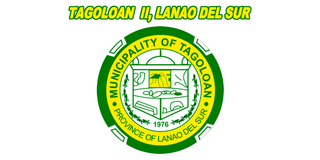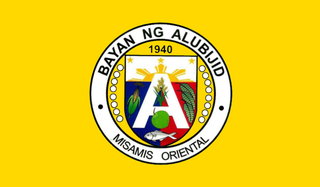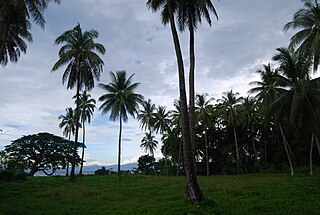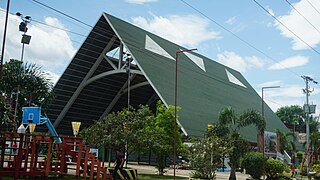
Gingoog, officially the City of Gingoog, is a 1st class component city in the province of Misamis Oriental, Philippines. According to the 2020 census, it has a population of 136,698 people.

Tagoloan, officially the Municipality of Tagoloan and also known as Tagoloan II, is a 4th class municipality in the province of Lanao del Sur, Philippines. According to the 2020 census, it has a population of 12,602 people. It is the poorest municipality in the whole country of the Philippines.

Baliangao, officially the Municipality of Baliangao, is a 5th class municipality in the province of Misamis Occidental, Philippines. According to the 2020 census, it has a population of 18,433 people.

Panaon, officially the Municipality of Panaon, is a 5th class municipality in the province of Misamis Occidental, Philippines. According to the 2020 census, it has a population of 10,797 people.

Alubijid, officially the Municipality of Alubijid, is a 4th class municipality in the province of Misamis Oriental, Philippines. According to the 2020 census, it has a population of 32,163 people.

Balingoan, officially the Municipality of Balingoan, is a 5th class municipality in the province of Misamis Oriental, Philippines. According to the 2020 census, it has a population of 11,020 people.

El Salvador, officially the City of El Salvador, is a 6th class component city in the province of Misamis Oriental, Philippines. According to the 2020 census, it has a population of 58,771 people.

Initao, officially the Municipality of Initao, is a 3rd class municipality in the province of Misamis Oriental, Philippines. According to the 2020 census, it has a population of 33,902 people.

Kinoguitan, officially the Municipality of Kinoguitan, is a 5th class municipality in the province of Misamis Oriental, Philippines. According to the 2020 census, it has a population of 14,091 people.

Lagonglong, officially the Municipality of Lagonglong, is a 5th class municipality in the province of Misamis Oriental, Philippines. According to the 2020 census, it has a population of 24,190 people.

Libertad, officially the Municipality of Libertad, is a 5th-class municipality in the province of Misamis Oriental, Philippines. According to the 2020 census, it has a population of 12,948 people.

Lugait, officially the Municipality of Lugait, is a 2nd class municipality in the province of Misamis Oriental, Philippines. According to the 2020 census, it has a population of 20,559 people.

Magsaysay, officially the Municipality of Magsaysay, is a 4th class municipality in the province of Misamis Oriental, Philippines. According to the 2020 census, it has a population of 36,803 people.

Manticao, officially the Municipality of Manticao, is a 4th class municipality in the province of Misamis Oriental, Philippines. According to the 2020 census, it has a population of 29,469 people.

Medina, officially the Municipality of Medina, is a 4th class municipality in the province of Misamis Oriental, Philippines. According to the 2020 census, it has a population of 35,612 people.

Opol, officially the Municipality of Opol, is a 2nd class municipality in the province of Misamis Oriental, Philippines. According to the 2020 census, it has a population of 66,327 people.

Salay, officially the Municipality of Salay, is a 4th class municipality in the province of Misamis Oriental, Philippines. According to the 2020 census, it has a population of 29,998 people. The town is known for its handmade paper and papercrafts, similar to washi, but made with indigenous fibers.

Sugbongcogon, officially the Municipality of Sugbongcogon, is a 5th class municipality in the province of Misamis Oriental, Philippines. According to the 2020 census, it has a population of 9,764 people.

Talisayan, officially the Municipality of Talisayan, is a 4th class municipality in the province of Misamis Oriental, Philippines. According to the 2020 census, it has a population of 25,761 people.

Villanueva, officially the Municipality of Villanueva, is a 2nd class municipality in the province of Misamis Oriental, Philippines. According to the 2020 census, it has a population of 40,419 people.























